Home> Technical Articles> Unlocking Potential: The Advantages of Maximum Capacity Ball Bearings
- AddressNo.1875 East Changjiang Road, New District, Wuxi, Jiangsu,China
- Factory AddressNo.1875 East Changjiang Road, New District, Wuxi, Jiangsu, China
- Worktime9:00-18:00
- Phone(Working Time)86-510-85310167
1 Introduction
Maximum capacity ball bearings are a vital component in various mechanical systems and industrial applications.
Understanding Maximum Capacity Ball Bearings
At its core, a maximum capacity ball bearing is designed to handle higher loads compared to standard ball bearings. This is achieved through specific design features and materials that allow for increased load capacity. These bearings are a crucial element in a wide range of machinery, where heavy-duty performance is essential.
Importance of Grasping Their Advantages
It's essential to comprehend the advantages that maximum capacity ball bearings bring to the table. By understanding their capabilities and applications, engineers and industrial professionals can make informed decisions when selecting bearings for their machinery. This knowledge can lead to improved efficiency, reliability, and cost-effectiveness.
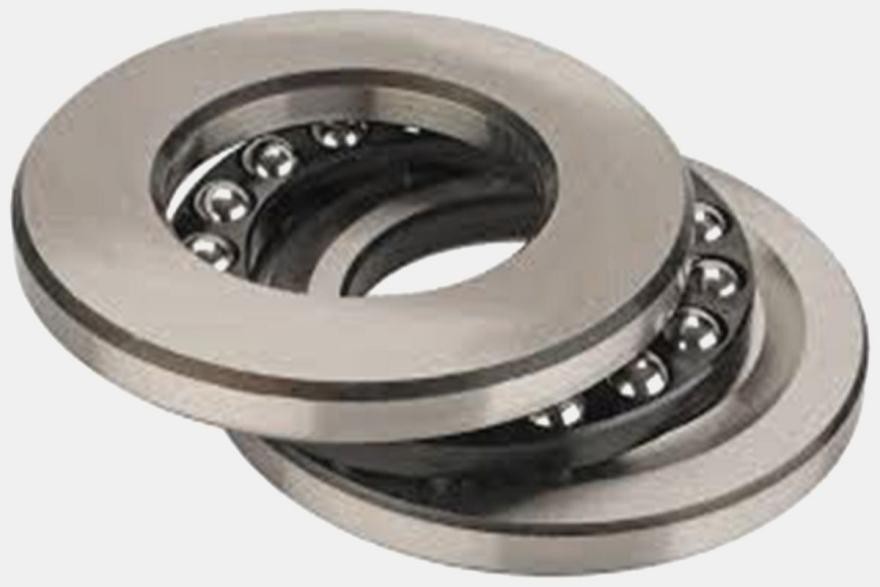
2 Design and Construction of Maximum Capacity Ball Bearings
To truly appreciate the advantages of maximum capacity ball bearings, it's crucial to understand their intricate design and construction.
Design Principles
Maximum capacity ball bearings are engineered with a specific purpose in mind: to handle heavier loads without compromising performance. The design principles that set them apart from standard ball bearings include:
1. Larger Ball Size
One of the defining characteristics of maximum capacity ball bearings is the use of larger balls. These larger balls enable a more substantial contact area with the raceways, distributing the load more evenly and reducing stress on individual components.
2. Increased Ball Quantity
These bearings often incorporate additional balls, resulting in a higher ball count compared to standard bearings. This surplus of balls contributes to enhanced load-bearing capabilities and increased durability.
3. Robust Cage Design
Maximum capacity ball bearings feature sturdy cage designs that effectively retain and guide the balls. The cage's robustness ensures the balls remain properly spaced and aligned, even under heavy loads.
Features Enabling Higher Load Capacity
The construction of maximum capacity ball bearings incorporates several features that enable them to carry heavier loads:
1. Extended Raceways
The raceways in these bearings are extended to accommodate the larger balls and additional quantities. This extended contact surface allows for greater load distribution and improved load-carrying capacity.
2. Enhanced Material Selection
Manufacturers often utilize high-quality materials for maximum capacity ball bearings, ensuring exceptional strength and durability. Premium materials contribute to the bearing's ability to withstand heavy loads over extended periods.
3. Precision Machining
The precision machining of these bearings ensures tight tolerances and a smooth, consistent surface finish. This precision results in reduced friction, allowing for efficient load transfer.
Variations for Specific Applications
Maximum capacity ball bearings come in various designs tailored to specific applications. These variations include:
1. Single Row Maximum Capacity Ball Bearings
Ideal for applications with radial loads, these bearings feature a single row of balls. They are commonly used in conveyor systems, fans, and gearboxes.
2. Double Row Maximum Capacity Ball Bearings
Designed to handle both radial and axial loads, double row maximum capacity ball bearings are well-suited for applications like pumps, electric motors, and agricultural machinery.
3. Full Complement Maximum Capacity Ball Bearings
These bearings have no cage and utilize the maximum number of balls possible. They excel in applications where extreme load capacity is required, such as heavy-duty machinery and construction equipment.
3 Advantages in High Load Situations
We will explore the remarkable benefits that maximum capacity ball bearings offer in high-load situations, shedding light on their ability to excel in heavy-duty applications. We'll discuss how these bearings effectively handle increased loads and stresses, and provide real-world examples to showcase their exceptional advantages.
Handling Increased Loads
One of the primary advantages of maximum capacity ball bearings is their unparalleled ability to handle increased loads. These bearings are specifically engineered to thrive in applications where heavy loads and high stresses are the norm. Here's how they achieve this:
|
Enhanced Load Distribution |
Maximum capacity ball bearings, with their larger ball size and increased ball count, distribute the load more evenly across their contact surface. This means that even in high-load scenarios, no single ball or component bears an excessive burden, resulting in reduced wear and longer bearing life.
|
|
Extended Raceways |
The extended raceways in these bearings provide a larger contact area for the balls. This extended surface effectively spreads the load, preventing localized stress concentrations. As a result, the bearings maintain their structural integrity and performance under demanding conditions.
|
|
Superior Material Strength |
Manufacturers select high-quality materials for maximum capacity ball bearings, ensuring exceptional strength and durability. These bearings are designed to withstand the rigors of heavy-duty applications, making them a reliable choice for industries where load capacity is paramount.
|
Thriving in High-Stress Environments
Maximum capacity ball bearings are engineered to thrive, not just survive, in high-stress environments. Whether it's the rigorous demands of heavy machinery or the constant vibrations in industrial equipment, these bearings excel under pressure. Here's why:
1. Robust Cage Design
The cage in maximum capacity ball bearings is meticulously designed to withstand high loads and stresses. It ensures that the balls remain properly spaced and guided, preventing any jamming or misalignment, even in the most challenging conditions.
2. Precision Machining
Precision machining plays a crucial role in reducing friction within these bearings. The smooth, consistent surface finish and tight tolerances result in efficient load transfer, even when confronted with heavy loads and rapid movements.
Real-World Examples
To illustrate the advantages of maximum capacity ball bearings in high-load situations, let's take a look at a couple of real-world examples:
1. Construction Equipment
In the construction industry, heavy machinery like excavators and bulldozers face extreme loads and harsh working conditions. Maximum capacity ball bearings in the equipment's various components ensure smooth operation and longevity, reducing downtime and maintenance costs.
2. Wind Turbines
Wind turbines operate in dynamic environments with constantly changing wind forces. These turbines rely on maximum capacity ball bearings to handle the substantial loads generated by their rotating blades. Their durability and load-carrying capacity are crucial for sustainable energy generation.
3 Applications Across Industries
We will delve into the extensive range of industries that benefit from the application of maximum capacity ball bearings. These bearings, known for their superior load-carrying capabilities, find utility in diverse sectors, improving efficiency and reliability. We'll explore real-world examples that underscore their versatility and functionality, and examine case studies demonstrating their enhanced load-handling capabilities.
Versatility in Industry
Maximum capacity ball bearings have established their presence in a wide array of industries due to their exceptional load-bearing capacity and robust performance. Here's an overview of some key sectors where these bearings play a pivotal role:
|
Automotive Manufacturing |
In the automotive industry, where precision and reliability are paramount, maximum capacity ball bearings are used extensively. From wheel hubs to transmissions, these bearings ensure smooth operation, even under heavy loads and demanding conditions. Improved load-handling capabilities contribute to vehicle safety and longevity. |
|
Aerospace and Aviation |
The aerospace and aviation sectors demand components that can withstand extreme conditions. Maximum capacity ball bearings are employed in critical applications such as aircraft landing gear, where they excel in supporting heavy loads during takeoff and landing. Their reliability is crucial for passenger safety.
|
|
Industrial Machinery
|
Across various industrial sectors, including manufacturing and mining, heavy machinery relies on maximum capacity ball bearings. These bearings enhance equipment durability and reduce maintenance downtime, ultimately improving productivity and cost-efficiency.
|
|
Renewable Energy
|
In the renewable energy sector, wind turbines require bearings that can withstand significant loads while ensuring smooth rotation. Maximum capacity ball bearings are integral to these turbines, contributing to sustainable energy generation.
|
Real-World Examples
To emphasize the versatility and functionality of maximum capacity ball bearings in different industries, let's examine a couple of real-world examples:
1. Manufacturing Assembly Lines
Manufacturing plants often use assembly lines to mass-produce products efficiently. Maximum capacity ball bearings are incorporated into conveyor systems, robotic arms, and other machinery to ensure continuous and reliable production. Their ability to handle heavy loads contributes to consistent manufacturing output.
2. Mining Equipment
In the mining industry, equipment operates in harsh environments, extracting valuable resources from the earth. Bearings in crushers, conveyors, and drilling machinery must endure substantial loads. Maximum capacity ball bearings withstand the punishing conditions, minimizing equipment downtime and maintenance costs.
Case Studies in Load Handling
Case studies offer a deeper understanding of how maximum capacity ball bearings enhance load handling. We will explore specific examples that highlight the significant improvements achieved in load capacity, reliability, and overall performance in various applications.
In the next section, we will conclude our exploration of the advantages of maximum capacity ball bearings, summarizing their significance and impact across industries.
4 Maintenance and Care Guidelines
In this section, we will explore the crucial aspect of maintaining and caring for maximum capacity ball bearings to ensure their longevity and reliable performance. Proper maintenance is essential to maximize the lifespan of these bearings and minimize the risk of unexpected failures. We will provide comprehensive guidelines, troubleshooting tips, and strategies for extending the lifespan of maximum capacity ball bearings.
Guiding Principles of Maintenance
Maintaining maximum capacity ball bearings is essential to uphold their efficiency and load-carrying capabilities. Here are some guiding principles to consider:
1. Regular Lubrication
Proper lubrication is fundamental to reduce friction and wear within the bearings. Different applications may require various types of lubricants, so it's crucial to follow the manufacturer's recommendations. Regularly inspect and replenish lubrication as needed.
2. Monitoring Temperature
Temperature is a critical factor affecting bearing performance. Regularly monitor the operating temperature of the bearings. Elevated temperatures may indicate problems such as inadequate lubrication or misalignment. Address any temperature issues promptly to prevent damage.
3. Alignment and Installation
Correct alignment during installation is paramount. Misalignment can lead to premature wear and decreased bearing life. Follow manufacturer specifications for installation procedures and alignment to ensure optimal performance.
Troubleshooting Common Issues
Even with proper maintenance, issues may arise from time to time. Understanding and addressing these common problems can prevent more significant failures. Here are some troubleshooting tips:
1. Abnormal Noise
Unusual noises, such as grinding, clicking, or squealing, may indicate issues within the bearing. Investigate the source of the noise, and if necessary, consult with a professional for inspection and potential replacement.
2. Vibration
Excessive vibration can lead to accelerated wear and reduced bearing life. Monitor vibration levels and conduct regular vibration analysis to detect imbalances or misalignments. Correct any issues to prevent further damage.
3. Contamination
Contaminants like dust, dirt, or moisture can infiltrate the bearing, leading to premature failure. Implement effective sealing and shielding mechanisms to protect the bearings from contaminants. Regularly inspect and clean the bearing housing.
Maximizing Bearing Lifespan
To ensure the maximum lifespan of your maximum capacity ball bearings, consider the following strategies:
1. Preventive Maintenance Schedule
Establish a preventive maintenance schedule based on the specific operating conditions and load requirements of your application. Regularly inspect and maintain the bearings according to this schedule to catch and address issues early.
2. Replacement of Worn Bearings
When bearings show signs of wear beyond a certain threshold, it is advisable to replace them promptly. Delaying replacement can result in more extensive damage to the machinery and increased downtime.
In conclusion, proper maintenance and care are essential to unlock the full potential of maximum capacity ball bearings. Adhering to these guidelines will not only extend the lifespan of the bearings but also contribute to the overall efficiency and reliability of the machinery in which they are utilized.
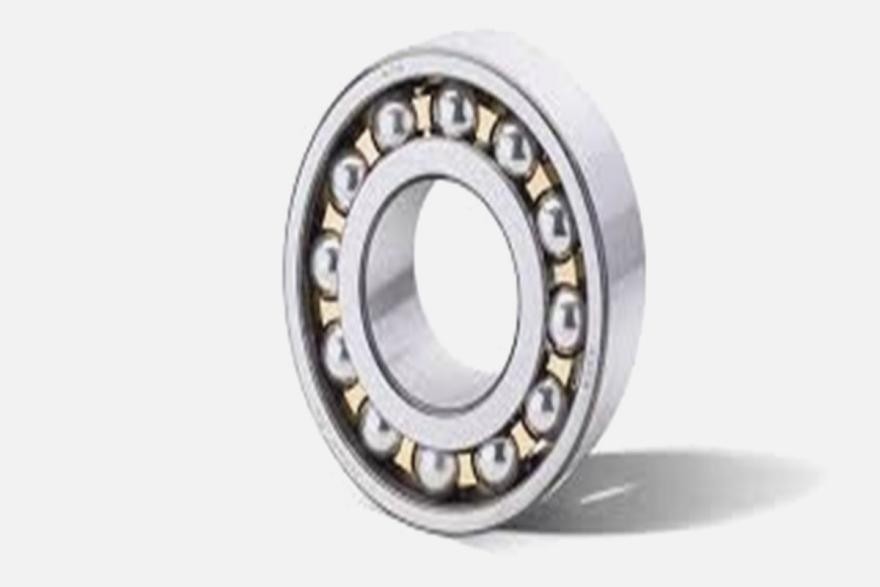
5 Conclusion
In conclusion, we have delved into the world of maximum capacity ball bearings and explored the multitude of advantages they offer in mechanical engineering and various industrial applications. Let us recap the key takeaways and emphasize the significance of these remarkable bearings.
Key Takeaways:
1. Enhanced Load-Bearing Capacity: Maximum capacity ball bearings are engineered to withstand heavy loads and high-stress conditions, making them indispensable in applications requiring exceptional load-bearing capabilities.
2. Reduced Friction: The unique design of these bearings minimizes friction, resulting in smoother operation, reduced energy consumption, and prolonged machinery life.
3. Versatility: From heavy machinery to aerospace technology, maximum capacity ball bearings find applications across diverse industries, highlighting their adaptability and reliability.
4. Optimized Efficiency: By minimizing energy loss due to friction and efficiently handling heavy loads, these bearings contribute to improved machinery efficiency and reduced downtime.
Significance in Mechanical Engineering:
Maximum capacity ball bearings are more than just components; they are the unsung heroes of mechanical engineering. Their ability to shoulder immense loads and facilitate seamless movement is instrumental in the performance of countless machines, from industrial presses to wind turbines.
Industrial Applications:
The advantages of maximum capacity ball bearings reverberate across various industries. Whether it's in the precision of aerospace technology, the robustness of construction equipment, or the reliability of mining machinery, these bearings play a pivotal role in enhancing productivity and minimizing operational disruptions.
Encouraging Wider Adoption:
As we conclude, we encourage manufacturers and engineers to consider the advantages of maximum capacity ball bearings in their designs and applications. By embracing these bearings, you unlock the potential for more efficient, durable, and high-performance machinery.
In the world of mechanical engineering, where load-bearing capabilities are often the measure of success, maximum capacity ball bearings stand as a testament to innovation and excellence. Their ability to carry the heaviest burdens with grace and precision ensures that they will continue to be indispensable components in the ever-evolving landscape of mechanical engineering.
Incorporate maximum capacity ball bearings into your designs, and you'll find yourself on a path toward unlocking the true potential of your machinery.
6 FAQs: Common Questions About Maximum Capacity Ball Bearings
In this section, we will address some of the frequently asked questions about maximum capacity ball bearings. These FAQs aim to provide a comprehensive understanding of these bearings and their advantages.
Q1: What are maximum capacity ball bearings, and how do they differ from standard ball bearings?
Maximum capacity ball bearings, also known as full-complement ball bearings, are designed to accommodate a higher number of balls than standard ball bearings. This results in increased load-carrying capacity and improved radial stiffness. Unlike standard bearings, which may have a cage to retain the balls, maximum capacity bearings have no cage, allowing for a full complement of balls.
Q2: What industries benefit the most from maximum capacity ball bearings?
Maximum capacity ball bearings find applications in a wide range of industries, including heavy machinery, construction, mining, and agriculture. They are particularly beneficial in industries where heavy loads and high-stress conditions are prevalent.
Q3: How do maximum capacity ball bearings enhance load-bearing capabilities?
These bearings excel in heavy-duty applications due to their unique design, which allows for more balls to be incorporated, resulting in higher load-carrying capabilities. This enhanced capacity ensures that machines can handle increased loads and stresses without premature wear or failure.
Q4: Are there any limitations or downsides to using maximum capacity ball bearings?
While maximum capacity ball bearings offer numerous advantages, they are not suitable for all applications. Their lack of a cage means that they may exhibit higher friction and heat generation compared to standard bearings at high speeds. Therefore, it's essential to select the right bearing type for the specific application.
Q5: How can I ensure the longevity and performance of maximum capacity ball bearings?
Maintaining these bearings involves regular lubrication and monitoring for signs of wear or damage. It's crucial to follow the manufacturer's guidelines for proper maintenance to maximize their lifespan and ensure optimal performance.
In this FAQ section, we've covered some of the common questions and concerns related to maximum capacity ball bearings. These answers should provide valuable insights into their advantages and considerations for various applications. If you have more questions or require further information, don't hesitate to reach out to trusted experts in the field or reputable bearing suppliers.


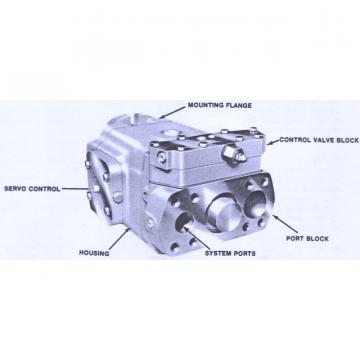 Dansion gold cup piston pump P30P-8L5E-9A4-A00-0B0
Dansion gold cup piston pump P30P-8L5E-9A4-A00-0B0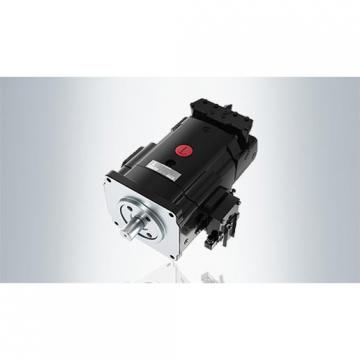 Dansion gold cup piston pump P30P-8L5E-9A2-B00-0C0
Dansion gold cup piston pump P30P-8L5E-9A2-B00-0C0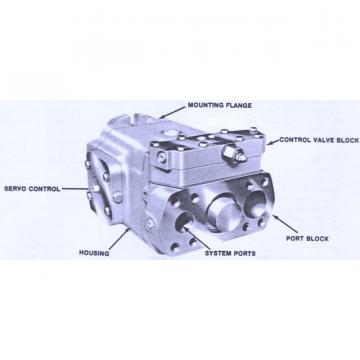 Dansion gold cup piston pump P30L-8L5E-9A7-A0X-B0
Dansion gold cup piston pump P30L-8L5E-9A7-A0X-B0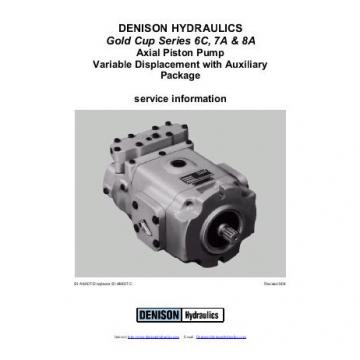 Dansion gold cup piston pump P30P-2R5E-9A7-B00-0C0
Dansion gold cup piston pump P30P-2R5E-9A7-B00-0C0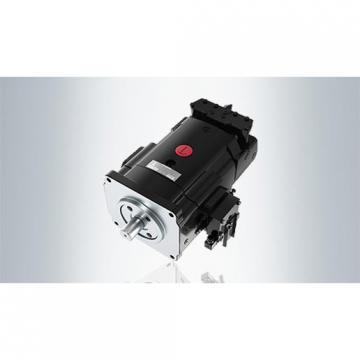 Dansion gold cup piston pump P30L-7R5E-9A2-A0X-D0
Dansion gold cup piston pump P30L-7R5E-9A2-A0X-D0